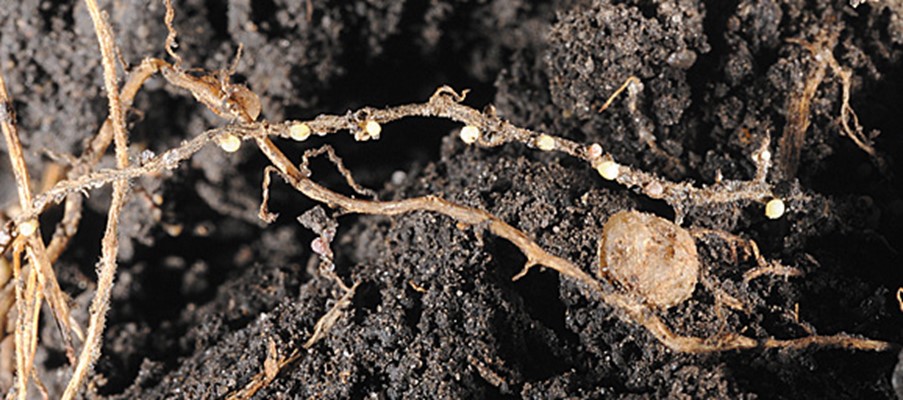
Jun 2, 2022, 11:00 AM
Soybean Cyst Nematode
Soybean Cyst Nematode is one of the most yield robbing pests soybean growers face today, especially in Minnesota and eastern North Dakota. Soybean Cyst Nematode, commonly referred to as SCN, is a parasitic roundworm that infests the soybean root system.
Factors to Consider
Things to consider when dealing with fields infested with SCN are that it takes many years of planting a non-host crop in the field to significantly reduce the severity levels in the field. To effectively manage the pest, we need to consider how the pest lives and affects the soybeans.
- SCN is not very mobile, therefore the way it spreads throughout the field primarily is by mechanical means such as being transported through soil that is still on equipment when moving throughout the field and from one field to another.
- Without a host plant SCN cannot reproduce.
- Often SCN goes undetected or misdiagnosed, but it is easily identified when knowing what to look for on the roots themselves.
- Soybean cysts are smaller and whiter than the soybean nodules as seen below.

Action Plan
If you suspect you have issues due to SCN, there are several actions you can take to identify and manage the issue:
- Soil test and identify current levels of SCN present in soil.
- Rotate away from soybeans and utilize a multiple crop rotation instead of a traditional corn/soybean rotation.
- Select soybean varieties with SCN resistance. New Peking gene lines are becoming more available in the very near future.
- Use current market seed treatment nematicides, such as Trunemco, for fields where known levels of SCN are present.
- Clean machinery off in fields to avoid spreading the problem to other fields that may not yet have the issue.
- Most importantly, use a combination of the practices above to reduce resistance to SCN.
Summary
SCN is one of the most yield reducing pests that soybean growers face today. While there are management tools available, none offer 100% control. The best thing growers can do is to identify, monitor their fields, and use the tools available to them in conjunction with each other to reduce resistance going forward.
Resources
crops.extension.iastate.edu/soybean/diseases_SCNbiology.html
www.ag.ndsu.edu/publications/crops/plant-disease-management-soybean-cyst-nematode

